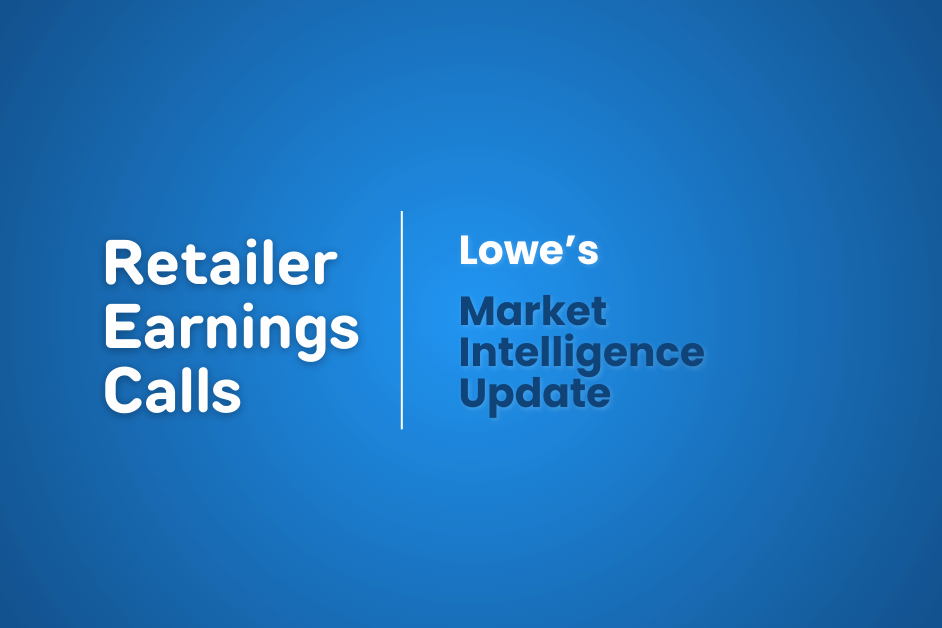Consumer data is a critical tool for understanding your market and improving your business strategy. It provides insight into purchasing behavior, preferences, and trends. This data helps optimize product placement, inventory management, and marketing strategies — ultimately enhancing customer satisfaction and driving sales growth.
In this blog post, we will look at the advantages and disadvantages across different types of consumer data collection. Read to discover key principles to look for when evaluating how to collect consumer data and reasons to use one option versus another.
5 major consumer data collection types
Here is a list of the primary types of data collection that we will examine in this article.
- Credit Cards
- Loyalty Programs and Subscription Records
- Government (Census, Voter History)
- Receipt Panels
- Surveys (Door-to-Door, Mall Intercept, Telephone, Mail, Online)
1. CREDIT CARD DATA
Due to heavy market usage (with an estimated 191 million Americans owning at least one credit card), credit cards are a prominent source of consumer data and a valuable metric for analyzing retail performance.
ADVANTAGES OF CREDIT CARD DATA
- Data is robust and easily obtainable
- Factual, transaction-specific information — no room for subjectivity
- Delivers insight into buying behaviors and spending patterns at specific retailers
- Good for wholistic retailer metrics
- Tracks transactions across online and in-store purchases
- Data can be updated very frequently
DISADVANTAGES OF CREDIT CARD DATA
- Often lacks specificity; lacks a breakdown of spending by line item or category
- Lacks the granularity to explain why consumers make specific purchases or emotional responses to products
- Quantitative data only
2. Loyalty Programs and Subscription Records
Customer loyalty data analytics track consumers’ ongoing interactions with a brand — from repeat purchases and engagement frequency to redemption patterns and churn risk.
ADVANTAGES OF SUBSCRIPTION & CUSTOMER LOYALTY DATA
- High consumer identification accuracy
- Captures consumer patterns over time; useful for churn prediction and retention analysis
- Cross-channel tracking: links in-store, online, and app-based behaviors for a single consumer profile
DISADVANTAGES OF SUBSCRIPTION & CUSTOMER LOYALTY DATA
- Very limited; only reflects consumers enrolled in the program
- Requires strict compliance with consumer data protection laws
- Skewed insights; loyalty participants typically more brand-loyal and spend more
- Requires consistent technology infrastructure and incentive management
3. GOVERNMENT DATA
Government data, such as the US Census, is a good source of consumer demographic information.
ADVANTAGES OF GOVERNMENT DATA
- Rich demographics data
- Direct from consumer
- Publicly accessible, available to anyone
- High-quality
DISADVANTAGES OF GOVERNMENT DATA
- Timeliness; may be very lagged – such as the US census is only fully collected once every 10 years
- Can be complex to extract insights from; needs a level of expertise to understand
- Typically quantitative data only
4. RECEIPT PANEL DATA
Receipt panel data typically involves consumer-submitted receipt images from either a photographed paper receipt or emailed digital receipt.
ADVANTAGES OF RECEIPT DATA
- Detailed purchase insights; SKU-level information, basket purchases, etc.
- Typically includes online and in-store data
- Authenticity, as it does not rely on consumer recall
DISADVANTAGES OF RECEIPT DATA
- Cannot calculate market share
- Representation will be limited due to panel base and low incident items
- Low data quality and gaps in data due to variance in submitted receipts
- Retail variation in product numbers (SKUs) and features create discrepancy
- Privacy concerns limit the ability to collect without consumer submission
- Quantitative data only
- Sample representation may be biased towards those willing to use a smartphone to take photos
- Requires “product information master” to decode items on the receipt into an actual product
5. SURVEYS & INTERVIEW DATA
Alongside the advancement of technology, survey and interview methodologies evolved over the past few decades — taking us from heavily limited door-to-door questionnaires to the more modern and highly accessible online survey.
While all these methods are still a valid method of gathering information, this list will highlight the evolution of surveys and the disadvantages of each.
ONLINE SURVEYS
Today, the most popular and efficient method of survey data collection are online surveys, which use the internet to distribute questionnaires through a technological device.
ADVANTAGES OF ONLINE SURVEYS
- Can accommodate high response numbers, allowing for a better market representation
- Extremely wide reach, not limited to geographical area
- Cost-effective
- Panel profiling allows for better targeting and therefore less expensive
- Automated data collection decreases turnaround time
- Easy integration with data analysis tools
- Can result in both quantitative and qualitative data
- Reporting may be made in real-time and changes can be made to sampling or surveys “on the fly”
DISADVANTAGES OF ONLINE SURVEYS
- Consumer recall bias
- Low engagement of respondents (survey fatigue)
- Can be lengthy and boring for consumers
- Representation — some demographics are under-represented (low income, unacculturated Hispanics for example)
- Privacy concerns
- Data quality issues between fraud and validity of responses — requires a backend system that can mitigate data quality risks
TELEPHONE SURVEYS
This method of data collection involves interviewers using phone calls to reach respondents. Today, these surveys often use automated voice systems to conduct the interviews.
ADVANTAGES OF TELEPHONE SURVEYS
- Can reach a wide range of consumers — not limited by geographical area
- Cost-effective compared to in-person interview methods like door-to-door
- Efficient, allows for quick turnaround of data especially when using automated response recording technologies
- Reduced response bias — delivers sense of anonymity compared to face-to-face interviews
- Can result in both quantitative and qualitative data
DISADVANTAGES OF TELEPHONE SURVEYS
- Response rates are declining, hang-ups are more frequent
- Technological limitations — poor connection, speaker clarity, etc.
- Data quality issues
- Expensive
MAIL SURVEYS
Still used prevalently throughout the world, mail surveys are standardized questionnaires that are sent to someone’s physical address to be filled out and mailed back.
ADVANTAGES OF MAIL SURVEYS
- Wide reach, not limited to geographical location, online, or telephone access
- Not limited by technology
- No interview bias
- Can result in both quantitative and qualitative data
DISADVANTAGES OF MAIL SURVEYS
- Low response rate
- Can be costly with prepping, mailing, receiving, processing
- Slow — delayed consumer response rate
- Limited data and low depth to insights gathered
DOOR-TO-DOOR
While used less frequently today in the US, door-to-door questionnaires were once a prevalent method of gathering consumer data. As indicated by the name, door-to-door involves visiting individual homes to conduct a survey or in-person interview.
ADVANTAGES OF DOOR-TO-DOOR
- Personal interaction/verify speaking with real human (allows for sight-screening)
- Geo-targeting typically allows for socio-economic targeting
- High response rate
- Detailed data collection as interviewer can follow-up on information provided
- Can result in both quantitative and qualitative data
- Can be highly representative by including harder to reach audiences
DISADVANTAGES OF DOOR-TO-DOOR
- Can be costly
- Very time-consuming
- Limited by local area/geographical restraints (e.g harder to collect representative data in remote areas)
- Data can be biased as consumers may look to provide socially desirable answers due to the face-to-face nature of the interview (acquiescence bias)
MALL INTERCEPT INTERVIEWS
This method involves approaching potential respondents in a mall or similar retail setting to conduct surveys or interviews. Often used to gather consumer opinions on products or services relevant to the location where the interview is held.
ADVANTAGES OF MALL INTERCEPT
- Targeted sampling / sight-screening; allows interviews to target specific demographics to create a better representation within collected data
- Detailed data collection, opportunity for follow-up
- Immediate feedback / product interaction
- High volume of respondents in a single location
- Can result in both quantitative and qualitative data
DISADVANTAGES OF MALL INTERCEPT
- Biased responses can be an issue as consumer could be hurried or looking to provide socially acceptable answers due to the face-to-face nature of the interview
- Consumer representation restricted to those who shop at that location
- Not always permissible
- Data input and analysis can be time costly
Which method is best for data collection?
The truth is, no single data source tells the whole story. Each type of consumer data collection comes with tradeoffs — some provide precise numbers but little context, while others uncover the “why” behind behavior but lack scale.
The most effective approach depends on what business question you’re trying to answer – with a multi-sourced approach delivering the most complete view of the market.
Below is a breakdown of when each method works best, drawing on the strengths and weaknesses discussed above.
| If your goal is… | Use this data type: | Why it works: |
| Measure real-world purchase behavior | Credit card and receipt data | Provides factual, verifiable transactions |
| Segment your audience or build demographic profiles | Government and/or survey data | Offers statistically representative population insights |
| Understand brand loyalty or predict churn | Loyalty and subscription records | Tracks repeat engagement and purchase frequency |
| Test new product concepts or marketing messages | Surveys and interviews | Reveals opinions, motivations, and emotional responses |
| Build a holistic consumer understanding | Combination of receipt data + survey data | Merges “what and how much” with “why” for deeper strategic insight |
Contact Us
OpenBrand integrates a multitude of data sources, each weighted dynamically based on how strong and relevant the signal is for a given product or category. It’s a flexible, pragmatic approach designed for a market where traditional methods often fall short. Learn more about what makes OpenBrand’s data stand out.
Contact us to see how OpenBrand can support your consumer data and market intelligence needs.
Related blogs
Prime Day 2025 for Durables: Shopper Intent, Promotions & Where to Focus
Prime Day 2025 broke the mold. For the first time, Prime Day ran four full days, spanning July 8–11, twice the usual length, and emerged as Amazon’s…
Related blogs
Home Depot Market Share Breakdown: Q3 2025 Earnings Call Analysis
Inside the Home Depot Q3 2025 Earnings Call Home Depot’s Q3 2025 earnings call confirmed solid…
Find Your Winning Segments With MindShare + Claritas PRIZM® Premier
OpenBrand added Claritas PRIZM® Premier segmentation to their MindShare solution, which delivers…
Lowe’s Earnings: Market Share Breakdown | Q2 2025
Q2 2025 EARNINGS UPDATED 08/27/2025 Inside the Q2 2025 Lowe’s Earnings Call Lowe’s earnings for Q2…
Home Depot Market Share Breakdown: Q2 2025 Earnings Call Analysis
Q2 RESULTS UPDATED ON 08/27/2025 Inside the Home Depot Q2 2025 Earnings Call Home Depot’s Q2 2025…




